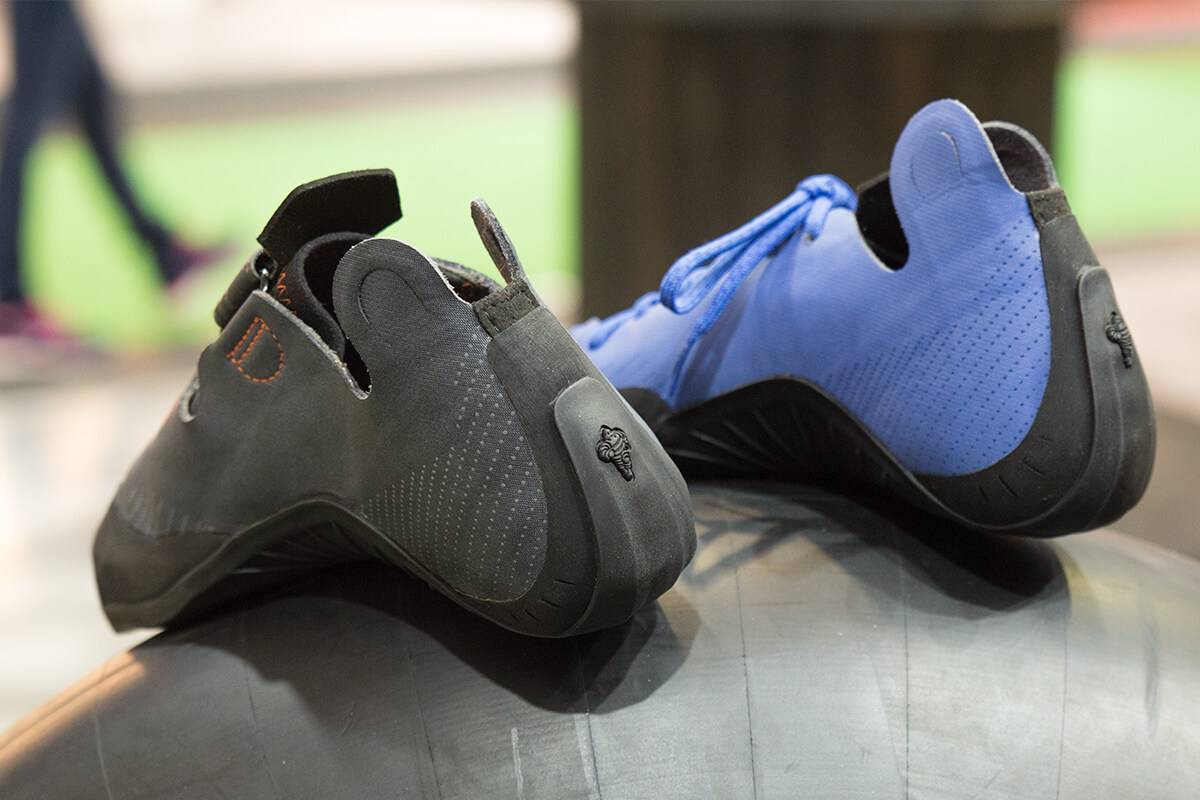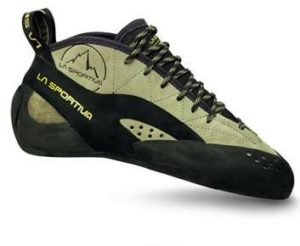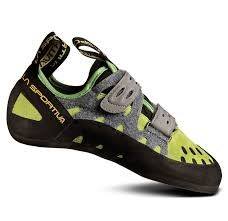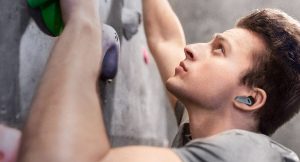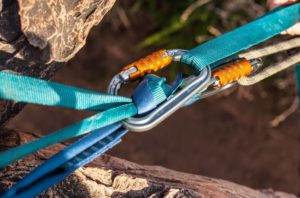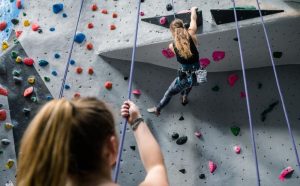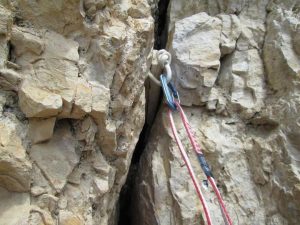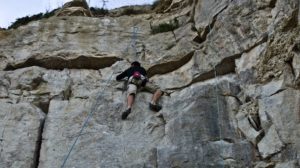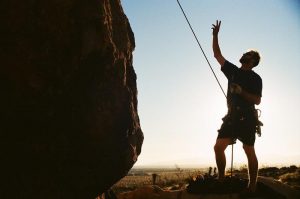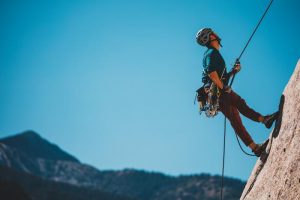Climbing shoes that fit well are essential for good climbing footwork and climbing technique. Learn the essentials of finding rock climbing shoes that fit the best.
Properly fitting rock climbing shoes are absolutely essential for developing efficient, effective climbing footwork from the start. Nonetheless, observation at climbing gyms has shown that many beginner-to-intermediate rock climbers are hindering their rock climbing training by climbing in ill-fitting climbing shoes. Here, learn what criteria should go into selecting the proper climbing shoe, including climbing shoe fit, make, and style, and how to purchase the best climbing shoe out there.
Every climber knows the importance of good climbing shoes. Shoes are probably the piece of gear that gets the most attention from climbers.
Different Types of Shoes for Different Types of Climbing
There is a broader spectrum of products on the market these days than ever before, and there are more options all the time. Some shoes are easily categorized, such as the La Sportiva Miura VS, because of their highly specialized function. Others that are intended to perform decently on a variety of terrains, such as the La Sportiva Katana Lace or Five Ten Anasazi VCS, are a little harder to place in a specific category. Below we provide a basic breakdown of features commonly associated with each type of shoe.
Sport Climbing and Bouldering Shoes
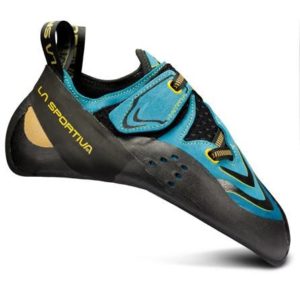
For starters, high-end specialized sport and bouldering shoes are typically gun-and-done shoes that you take off immediately after you finish climbing. While they shouldn’t be excruciating, they will likely be sufficiently uncomfortable that you won’t wear them while belaying. These shoes will typically have an aggressively downturned toe and be asymmetrical in shape. For a sports shoe you can wear all day, look for a flatter toe and more symmetrical design that is more naturally comfortable instead of just wearing a loosely fitting, aggressively shaped shoe.
Traditional and Crack Climbing Shoes
A shoe for crack climbing will typically have a flatter toe and symmetrical design. This makes them more comfortable for wedging into cracks and wearing for longer durations. These shoes can also be worn larger for comfort, or to allow room for socks if you’re going really high, or climbing with your grandpa. A slight downturn can still be comfortable on the really big days and will give you an edge in performance when it matters.
Shoes for the Gym and Beginners
Depending on how hard you go in the gym, your choice of shoes will vary widely. Again, a flatter toe and larger sizing will prove to be more comfortable (which is highly recommended for those just starting out), but for pushing your limits indoors, a tightly fitted aggressive shoe will go a long way.
Criteria For Evaluation
Comfort
The comfort of a climbing shoe depends on how you size the shoe, your foot position, and the shoe’s material. The tighter the shoe, the better it will perform, the looser the shoe the worse it performs.
However, tightness equals pain and looseness equals comfort. But, if your shoes are so tight you can’t put pressure on your toes, you may have reached the point of downsizing which is counterproductive.
A down-turned toe and asymmetrical shape typically mean a shoe is less comfortable, but a more aggressive shape also enhances performance in many aspects of climbing. With modern technology and design, climbing performance and comfort are no longer mutually exclusive concepts.
How Tight Should Your Shoes Be?
Basically, rock climbing shoes should fit like a glove, with as little dead air space as possible. This means that when wearing climbing shoes, they should not have wrinkles in the leather on the top of the foot, space in the heel, or make sounds of air escaping when a climber walks or climbs. Climbing shoes should fit much more tightly than a street shoes, but should not be excruciatingly painful to wear.
Also note that wearing socks in climbing shoes is not recommended, as this can hamper precise climbing footwork.
Climbing Shoes: Lined or Unlined, Thick or Thin Rubber, Velcro or Lace-Up?
Many beginners find it helpful to have the extra support of a lined climbing shoe and/or thicker shoe rubber on the bottom of the shoe. Be aware that lined climbing shoes will, as a rule, not stretch more than half a size, whereas unlined climbing shoes will stretch out much more (often about the size) and in doing so, conform to a climber’s feet. This fact should play a role in deciding which size to go with.
Lace-up climbing shoes tend to be able to be tightened more than Velcro closures and slippers. On the flip side, Velcro closures and slippers make for easier on-and-off between climbs at the gym or between boulder problems when bouldering. If neither of these issues is of great concern, a climber should simply go with the shoes that fit the best.
Visit Climbing/Outdoor Stores to Try on Climbing Shoes
It is highly recommended that before purchasing the first pair of rock climbing shoes (or before buying another pair to replace shoes that don’t fit properly) that the climber should visit several knowledgeable salespersons at several climbing shops. Ask questions and try on all available styles. Test them on the in-store climbing wall, if available. A person can always make a list of his or her top-choice styles and then return home to look for bargains on the Internet.
The Wrong Criteria for Rock Climbing Shoes
Climbing shoes should optimally not be purchased solely for any of the following reasons:
- Because they’re a great bargain,
- Because a cool climber in the magazines wears them,
- Because a store nearby carries them,
- Because someone else says they’re great,
- Because a climbing partner at the gym wears them, or
- Because of their appearance.
Of course, if a climber finds more than one type of climbing shoe that fits properly, then the above criteria can certainly play a role in the decision of which shoes to purchase. These reasons simply should not be the top factors in deciding which climbing shoes to purchase.
The Bottom Line
Buy the rock climbing shoes that fit the best — these are the best climbing shoes available for each person’s own purposes. If a climber finds two pairs of shoes that are equal in fit and performance (or very close), then that person can and should consider other factors such as price, reputation for durability, coolness factor, and so forth. It is worth it to spend more money, if necessary, on well-fitting climbing shoes in order to maximize climbing footwork and get better at rock climbing.

